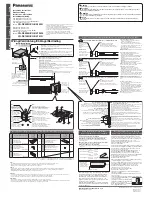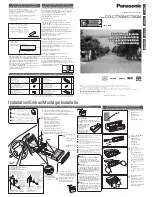
- 7 -
Interfacing
The following are the interface connections for the TinyTrak3, which are needed before operation.
Radio – J1
Female DB-9 connector J1 is used to interface TinyTrak3 to a radio transceiver. It is compatible with the radio connector
on Kantronics TNC, such as the KPC-3. Connect AUDIO OUT (J1 pin 1) to the radio’s mic input. If the transmitter
transmits when the microphone input is grounded (most handheld (HT) radios do, except the Kenwood brand), resistor R8
must be installed, but PTT OUT (J1 pin 3) will not need to be connected to the transmitter. For all other transmitters, PTT
OUT (pin 3) will be needed, and should be connected to the transmitter’s PTT input. PTT OUT is grounded when the
transmitter is to be keyed. To prevent transmissions over other stations, connect the receiver’s squelched audio out
(earphone) jack to the AUDIO IN (pin 5). Also connect J1 GROUND (pin 6) to the radio’s ground. Note: TinyTrak3 cannot
decode the incoming packet data. Instead, it just watches for audio energy (voice, data, or static) to hold off transmitting
over other stations. Refer to the transceiver’s manual for more information, and look for a section on installing a terminal-
node controller (TNC) for packet operation, as TinyTrak3 is interfaced in a similar manner. J1 can also be used to supply
or receive TinyTrak3’s power, via pin 7 and pin 6.
J1 also provides a PTT INPUT (pin 8) to allow TinyTrak3 to transmit a data burst after the microphone is unkeyed after
voice traffic. This input should be grounded when PTT is pressed, and floating when PTT is released. This input is not
needed for normal operation. J1 also can optionally interface to a radio’s carrier detect output via the CARRIER DET input
(pin 2). To use this option, CARRIER DET should be grounded when the channel is busy. If the radio asserts CD output
high when the channel is busy, use the Invert CD option in the configuration program. In addition, SW1 is available on J1
via pin 4. Some example radio interface diagrams are available at http://www.packetradio.com/tnc2rad.htm.
Serial – J2
TinyTrak3 must be connected to a computer for configuration of call sign and other operating parameters, and then
connected to a GPS to receive position data. The male DB-9 J2 serial connector is used for this purpose. J2 pin 3 is used
to transfer serial data from the TinyTrak3 to the computer. J2 pin 2 is used to transfer serial data from the computer or
GPS to the TinyTrak3. J1 pin 5 is serial ground. Both a gender-changer (female-to-female) AND a null-modem adapter will
be needed to interface the computer to TinyTrak3. A null-modem adapter swaps pins 2 and 3, and connects pin 5. Use a
DB-9 serial extension cable if it is difficult to connect the gender-changer, null-modem adapter, and TinyTrak3 directory to
the computer 9-pin serial port. Due to the TTL voltage levels used, some laptop computers may not be able to
communicate with the TinyTrak3.
If using a GPS that plugs directly into a computer serial port, that GPS can be plugged directly into TinyTrak3’s J2 serial
connector. If the GPS does not connect directly into a computer’s serial port, an interface will need to be built. The GPS
should have a female DB-9 with GPS serial data out wired to pin 2, and ground to pin 5. GPS serial input is not used. J2
can also be used to supply or receive TinyTrak3’s power. If this is desired, short J7 on the back of the PCB by dropping a
bead of solder across the two square pads. After this, J2 pin 4 will be connected to J3 and J1 pin 7. The GPS must output
the $GPRMC sentence or the $GPGGA sentence or both at 4800 baud N81. The $GPRMC sentence provides position,
speed and direction. The $GPGGA sentence provides position and altitude.
Power – J3 (also J1 and J2)
TinyTrak3 should be powered with 7-35 volts DC. Power can be applied via J1, J2, or J3. J1 is the most common way to
power the TinyTrak3. To use J1, connect pin 7 to positive voltage and pin 6 to ground. To use J2, connect pin 4 to
positive voltage and pin 5 to ground. Also, short J7 on the back of the PCB by dropping a bead of solder across the two
square pads. To use J3, apply positive voltage to the plus (+) hole, nearest the LEDs, and ground to the minus (-) hole.
Only one of the three jacks J1, J2, and J3 should be used to supply power to the TinyTrak3. If power is applied via J2 or
J3, the same power will be available on J1 to power a radio. If power is supplied via J1 or J3, the same power can be
retrieved via J2 to power a GPS, if J7 is shorted. Be sure not to draw more current than your supply can handle. At 12
volts, current draw is 6.6ma + 3ma for each LED lit. If desired, the 4 1K LED resistors can be replaced with 10K resistors,
which will cause the LED to only draw about 0.5 ma each.
LED Control – J4
This optional jumper is normally bridged on the PCB, but if desired, can be cut, and replaced with a true jumper. This will
allow easy disconnection of the LEDs if current saving is important. If desired, cut the trace between the two J4 holes, and
insert a 1x2 header.


































